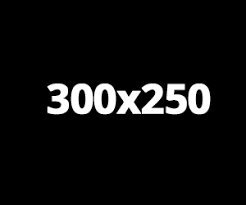Visa Bulletin Update: Indian Nationals Face Setbacks in Pursuit of H-1B Visas and Green Cards
The recent release of the U.S. Department of State’s Visa Bulletin for May 2025 has dealt a significant blow to Indian nationals seeking H-1B visas and green cards. Among the most affected groups are those applying under the Employment-Based Fifth Preference (EB-5) category. The bulletin reveals a troubling retrogression in the EB-5 Unreserved category, which has moved back from November 1, 2019, to May 1, 2019. This shift narrows the eligibility window for many hopeful applicants and considerably delays their pathway to U.S. permanent residency.
The Discrepancy Between Indian and Chinese Applicants
The retrogression presents a stark contrast when compared to the situation faced by Chinese applicants, who remain unaffected by such setbacks, retaining their EB-5 cutoff date at January 22, 2014. This disparity highlights a concerning trend for Indian applicants, who are experiencing a significant squeeze in their options. The Visa Bulletin attributes this setback primarily to high demand and usage by Indian applicants, coupled with an influx of applications from other regions. The bulletin notes, “It was necessary to further retrogress the Indian final action date to hold number use within the maximum allowed under the FY-2025 annual limits.”
Understanding the EB-5 Program and Its Challenges
The EB-5 visa category is specifically designed for qualified immigrant investors, with provisions for both reserved and unreserved slots. It encourages investment in rural areas, high-unemployment zones, or infrastructure projects. However, the overwhelming demand has been concentrated in the unreserved segment, where Indian nationals have become particularly proactive in seeking visas. This high volume leads to a rapid depletion of available visas and, ultimately, the unfortunate retrogression seen in the latest bulletin.
The Importance of ‘Final Action Dates’
The ‘Final Action Dates’ listed in the Visa Bulletin hold significant weight for applicants, as they dictate when the United States Citizenship and Immigration Services (USCIS) can finalize an application for visa or green card processing. For individuals whose priority dates are earlier than the date indicated in the bulletin, the path forward remains clear. However, for those caught in the current retrogression, the situation becomes increasingly tenuous.
Employment-Based Categories: A Stagnant Landscape
While many employment-based visa categories show little to no movement for Indian applicants, there has been a modest advancement in the Employment-Based Third Preference (EB-3) category, with India’s cutoff date inching forward by just two weeks to April 15, 2013. In contrast, the EB-1 category remains frozen at February 2, 2022, while EB-2 has not shifted from its January 1, 2013, cutoff date. The stagnation in these critical categories is indicative of the broader congestion challenges affecting the immigration system, which are compounded for both Indian and Chinese applicants.
Caps and Limits Impacting Immigration
The Visa Bulletin further clarifies the annual caps on family-sponsored and employment-based preference immigration for FY-2025, which stands at 226,000 and 140,000, respectively. Each country faces a limit of seven percent of the total across both categories, capping each nation to 25,620 visas annually. Additionally, dependent areas can claim no more than two percent, or 7,320 visas. These limits restrict the flow of eligible candidates, exacerbating the challenges faced by Indian nationals in particular.
Political Climate and Its Effects on Immigration Policy
This update arrives at a critical juncture in American politics, with immigration resurfacing as a pivotal issue. Since Donald Trump’s return to the White House in January 2025, there has been a renewed emphasis on the "America First" policy, spotlighting calls to tighten scrutiny on both illegal and legal immigration. Although the administration’s priorities have primarily targeted undocumented immigrants, the stringent policies increasingly overlap with those seeking lawful entry through work visas or investment opportunities like EB-5.
The Broader Implications
The current situation observed in the Visa Bulletin speaks volumes about the hurdles faced by high-skilled immigrants in America. It reflects a complex interplay of demand, policy decisions, and geopolitical dynamics that collectively influence immigrant aspirations. For many Indian applicants, the latest bulletin serves as a stark reminder of the rigid limitations of the immigration landscape in the U.S., necessitating continued advocacy and reform to address these pressing challenges.




